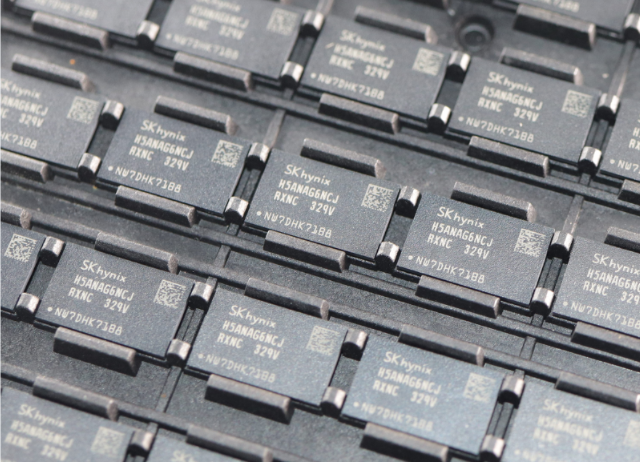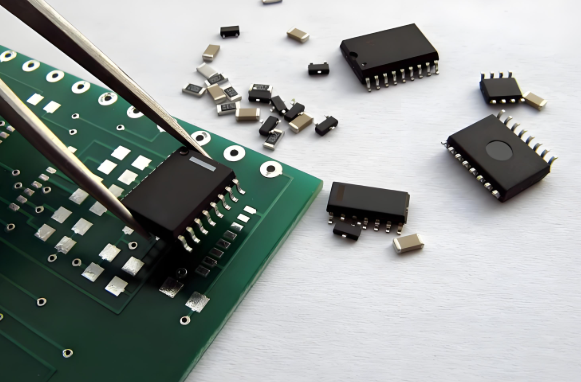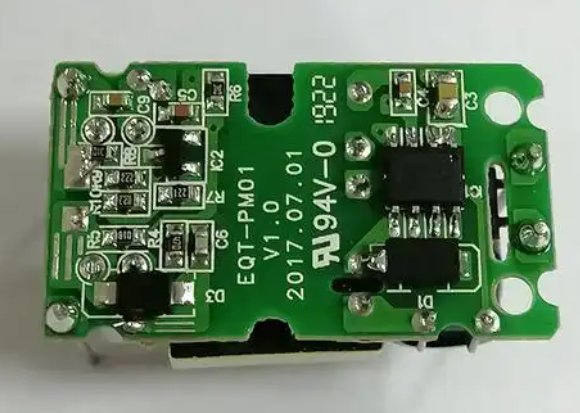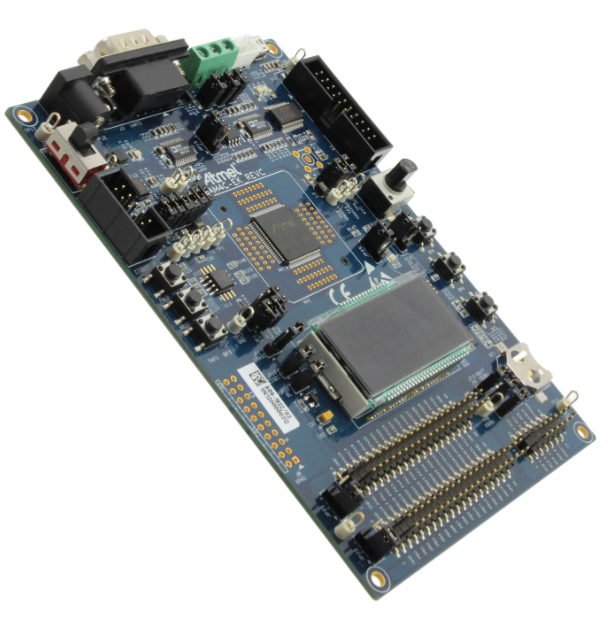The Ultimate Guide to Sourcing Imported Electronic Components
Introduction
In today’s globally interconnected and technologically driven world, the demand for high-quality, reliable, and advanced electronic components is at an all-time high. From multinational corporations manufacturing consumer electronics to innovative startups developing cutting-edge IoT devices, the reliance on a robust and efficient supply chain for parts is absolute. However, sourcing these critical components, especially Imported Electronic Components, presents a unique set of challenges and opportunities. Navigating international markets, ensuring authenticity, managing logistics, and maintaining cost-effectiveness are paramount for success. This comprehensive guide delves into the intricacies of procuring imported electronic components, highlighting best practices, mitigating risks, and exploring how platforms like ICGOODFIND are revolutionizing the sourcing landscape. Understanding this complex ecosystem is not just beneficial—it is essential for any business aiming to thrive in the competitive electronics industry.

The Critical Importance and Advantages of Sourcing Imported Electronic Components
The decision to source electronic components from international markets is not merely a logistical choice; it is a strategic imperative for many businesses. This approach offers a multitude of advantages that can significantly enhance a company’s competitive edge, product quality, and bottom line.
Access to Specialized and Advanced Technology is perhaps the most compelling reason to look beyond domestic borders. Certain countries and regions have established themselves as global hubs for specific technological niches. For instance, manufacturers in countries like Japan, Germany, and South Korea are renowned for their precision in producing high-fidelity sensors, advanced microcontrollers, and superior passive components. By importing, companies gain direct access to these specialized parts that may not be available or manufactured to the same standard locally. This allows for the incorporation of best-in-class technology into their products, fostering innovation and superior performance.
Furthermore, Cost-Effectiveness and Competitive Pricing play a huge role in sourcing decisions. Regions with established manufacturing ecosystems, such as those in East Asia, often benefit from economies of scale, lower production costs, and highly optimized supply chains. This enables them to offer components at a significantly lower price point without necessarily compromising on quality. For businesses operating on tight margins or competing in price-sensitive markets, this cost advantage can be the difference between profitability and loss. Importing allows companies to reduce their Bill of Materials (BOM) cost, thereby increasing their overall market competitiveness.
Another key advantage is Mitigating Supply Chain Shortages and Ensuring Availability. The electronics industry is notoriously cyclical, experiencing periods of severe shortages for specific components. Relying solely on a domestic or single-source supplier can be risky, leaving a company vulnerable to production halts. A global sourcing strategy diversifies the supply base, providing alternative channels to procure parts during shortages. This multi-sourced approach enhances supply chain resilience, ensuring that production lines can continue to operate even when one source dries up. It provides a crucial buffer against market volatility and geopolitical disruptions that can impact local availability.
Navigating the Challenges and Implementing Effective Risk Mitigation
While the benefits are substantial, the path to successfully importing electronic components is fraught with potential pitfalls. A proactive and knowledgeable approach is required to navigate these challenges effectively.
The most significant threat in the global electronics market is the proliferation of Counterfeit Components. These fraudulent parts can infiltrate the supply chain at any point, posing severe risks to product functionality, safety, and brand reputation. A counterfeit component can lead to catastrophic system failures, costly recalls, and even safety hazards. Therefore, implementing rigorous verification and authentication processes is non-negotiable. This includes demanding full traceability documentation (such as Certificates of Conformity and original factory packaging), partnering with authorized distributors, and utilizing advanced testing methods like X-ray inspection and decapsulation to verify authenticity.
Complex Logistics and Lead Time Management also present a considerable challenge. International shipping involves customs clearance, import duties, taxes, and potential delays due to port congestion or regulatory checks. These factors can lead to unpredictable lead times, disrupting production schedules. To manage this, businesses must develop strong relationships with reliable freight forwarders and customs brokers who understand the intricacies of shipping electronic goods. Implementing robust inventory management strategies, such as safety stock or just-in-time (JIT) systems with trusted partners, can help buffer against these delays and ensure a smooth flow of components.
Additionally, Navigating Regulatory Compliance and Quality Standards is critical. Different countries have varying regulations regarding electronics, including restrictions on materials like conflict minerals (complying with laws like Dodd-Frank Act Section 1502), RoHS (Restriction of Hazardous Substances), and REACH (Registration, Evaluation, Authorisation and Restriction of Chemicals). Ensuring that every imported component complies with these international and destination-country standards is a complex but essential task. Failure to do so can result in seized shipments, hefty fines, and an inability to sell the final product in certain markets. Establishing a clear compliance protocol and working with suppliers who provide necessary documentation is vital for seamless market access.
The Modern Solution: Leveraging Digital Platforms like ICGOODFIND
The digital transformation has ushered in powerful tools that simplify and secure the process of sourcing imported electronic components. Online platforms have emerged as indispensable allies for procurement professionals, addressing many traditional pain points.
These platforms act as centralized global marketplaces, aggregating listings from thousands of vetted suppliers worldwide. This provides buyers with Unprecedented Market Visibility and Choice. Instead of spending weeks contacting individual suppliers, engineers and procurement managers can instantly search a vast database to find rare, obsolete, or long-lead-time parts. This efficiency dramatically reduces sourcing time and accelerates product development cycles.
A standout feature of advanced platforms is their focus on Supply Chain Transparency and Trust. They often implement supplier verification programs, rating systems, and secure escrow payment services. This ecosystem builds a framework of accountability that is difficult to achieve through independent dealings. For example, a platform like ICGOODFIND excels in connecting buyers with a network of reputable suppliers while providing tools to verify part authenticity and track orders seamlessly. By leveraging such a platform, businesses can significantly de-risk their procurement process. They gain access to a global network without having to individually vet every new supplier, saving immense time and resources while enhancing security.
Furthermore, these digital solutions offer Data-Driven Insights for Smarter Procurement. They provide valuable data on pricing trends, market availability, and lead time forecasts. Armed with this intelligence, companies can make more informed purchasing decisions, optimize their inventory levels, and negotiate better terms with suppliers. This transforms procurement from a reactive function into a strategic asset for the business.
Conclusion
Sourcing imported electronic components is a complex yet indispensable strategy for businesses aiming to innovate, compete on cost, and ensure a resilient supply chain. While the journey involves navigating challenges like counterfeit risks, logistical complexities, and regulatory compliance, the rewards of accessing global technology and pricing are too significant to ignore. Success in this endeavor hinges on diligence, expertise, and the strategic use of modern tools. Embracing digital marketplaces that prioritize verification, transparency, and efficiency is no longer optional but a critical component of a modern procurement strategy. Platforms such as ICGOODFIND exemplify this new era, offering a secure bridge between global demand and supply. By adopting a informed and technology-backed approach, companies can confidently harness the power of the global market to drive their growth and technological advancement forward.






























